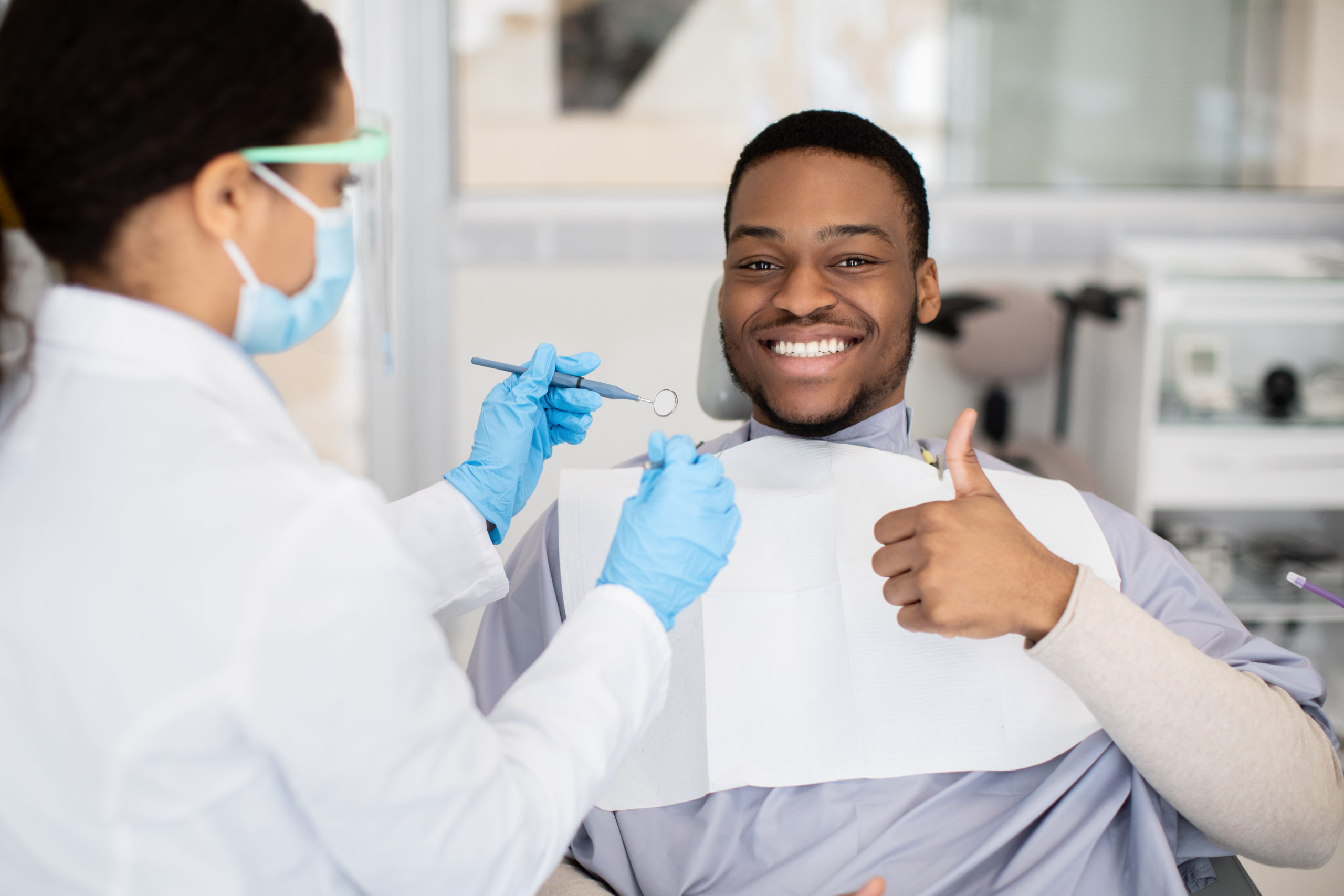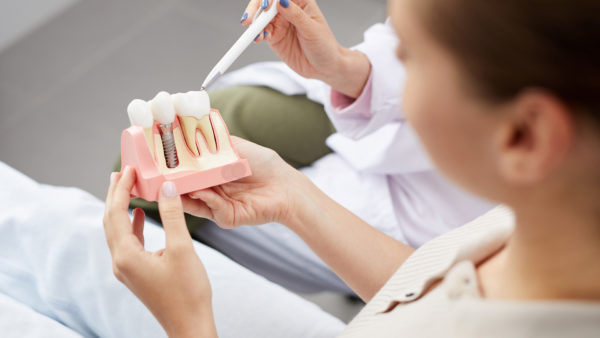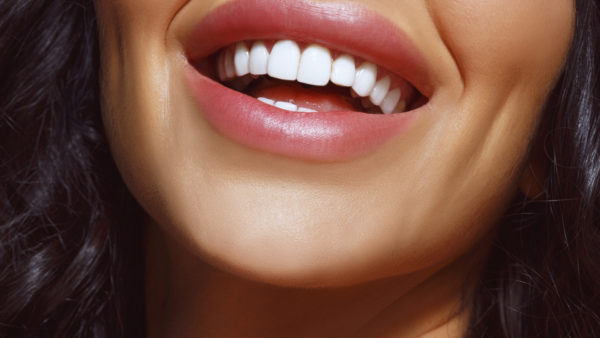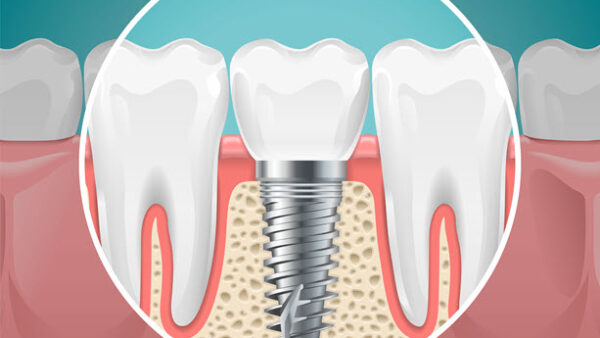With the busy lifestyles that most people lead today, it is not uncommon for people to either forget or delay all types of health check-ups including of course dental check-ups. It is especially easy to prolong a visit to the dentist if nothing hurts. Just about every dental professional will tell you that the best time to visit the dentist is when nothing hurts. When nothing hurts, small problems can be treated or minimized and prevented from becoming an uncomfortable and costly, or potentially embarrassing issue.
In this article, we will examine seven important reasons to get a dental check-up.
Screening For Oral Cancer
Part of the oral exam that your dentist should give you during your check-up is a screening for oral cancer. The dentist will examine the lateral borders of the tongue, the floor of the mouth, and the gums, which are the most common areas to see the changes in the tissue, which can indicate oral cancer. Note that this is a screening and a biopsy is needed for a definitive diagnosis should the dentist see something which looks suspicious. It is important to note that at least 3 percent of cancer diagnoses each year are oral cancers. In its early stages, mouth cancer rarely causes any pain. Some of the risk factors for oral cancer include tobacco and alcohol use (including chewing tobacco), HPV exposure, and family history. However, it is interesting to note that roughly half of the people diagnosed with oral cancer did not have a history of tobacco use.
Tooth Decay
Many or most people believe that if they have a ”cavity” or tooth decay they will feel pain or conversely if they feel the pain they must have a cavity. This is often not the case. In fact, the vast majority of cavities or dental decay is an asymptomatic condition in most cases unless the decay has progressed to a point very near or into the nerve of the tooth. In cases where a tooth has been treated with a prior root canal, the patient will usually never feel pain from even severe decay. When the dentist or hygienist takes x-rays and an oral exam is performed, the dentist is looking for evidence of decay, which can be treated prior to it becoming symptomatic or painful. There is a tremendous difference between filling a cavity or two and having that cavity progress to a root canal which then often also requires more advanced restoration of the tooth with a post or a post and crown. In very advanced cases, a tooth can be non-restorable and may require extraction if neglected long enough.
Evaluation of The Gums
Another area that the dentist and hygienist will evaluate when you are in for a check-up is your gums. It has been said that your gums and gum health is a window to your overall health. It is well documented that inflammation in the body is directly related to many forms of disease including both cardiac disease and cancer. Inflammation in other parts of the body cannot often be seen during clinical evaluation but the signs of gum inflammation can easily be seen by your dentist or hygienist during your examination. Swelling, bleeding, and discoloration are sure indicators of inflammation.
Plaque and bacteria build up on teeth and gums over time, especially in the absence of excellent home care and professional cleaning. When this occurs, the immune system acts to attack this localized area and gums become inflamed. When gums become inflamed and infected, toxins are released which can travel in the bloodstream causing inflammation in arteries and the organs, which these vessels feed.
Inflamed and infected gums not only can affect your overall health but also can also potentially affect your social life by causing bad breath. The most common cause of halitosis is usually some form of gum disease.
Regular dental checkups and cleanings can help ensure that you can prevent gum disease or at least get proper treatment if you begin to show signs of this common disease.
Diagnosis And Prevention of Bone Loss
One of the more serious consequences of chronic gum disease is bone loss around the teeth. Many people do not understand that advanced gum disease is actually the cause of severe bone loss with the eventual loosening of teeth and potential tooth loss. This process normally progresses slowly and painlessly until it gets to more advanced stages. The good news is that your dentist and hygienist can see the early stages of bone loss during a clinical examination when x-rays are taken and evaluated. The dentist will evaluate the bone level around the teeth seen on the x-rays and consider the age of the patient and compare x-ray results to bone levels from x-rays taken in prior years. Bone loss can be treated and often prevented or at least progression slowed in order to avert future damage or tooth loss. Good home care and regular checkups/cleanings are again the best forms of prevention. Prevention is the best policy because treatment of advanced bone loss is not usually a simple undertaking.
Diagnosis of Bone Infections
When x-rays are taken during a dental check-up the dentist will also check if any infection of the bone is present. It is important to note that different types of x-rays can be used to diagnose various types of bone problems. Individual tooth x-rays can show potential problems adjacent to a tooth whereas full jaw x-rays or CBCT scans can show bone infections in the jawbones or sinuses.
Infected teeth often appear to have bone abscesses while partially erupted wisdom teeth can demonstrate larger areas of infection. Infected upper teeth can also be the cause of infection and fluid formation in sinuses, which should otherwise be clear and sterile. A nerve inside a tooth can die silently forming an abscess in the bone while the patient is completely unaware that they have a bone infection, which may be spreading to other teeth or important structures.
It is helpful to let your dentist and hygienist know if you suspect that something doesn’t feel right so that the clinician can take the proper type of x-ray best utilized to check the involved area. Patients often improperly assume that a few individual x-rays can be used to diagnose everything in the jaws and mouth.
Tooth Wear/Grinding
Tooth grinding or excessive tooth wear often goes unnoticed by a patient. Your dentist will check for unusual tooth wear which can be caused by either grinding or a poor bite. Tooth grinding and clenching is very common and often occurs at night during sleep, so people are usually unaware that they are even doing it. During times of stress, grinding generally increases and there is not an easy way to stop it, but the damage caused by it may be prevented. There are dental appliances that can be fitted which will help to prevent tooth wear and joint problems, which are discussed below.
TMJ/ Joint and Muscle Problems
As noted previously, grinding and bite problems are fairly common among the overall population. These issues along with trauma can cause a person to have TMJ or joint muscle problems. These problems range from asymptomatic popping or clicking of the jaw joint to total debilitation. As with other joints in the body, the jaw joint can be susceptible to many of the same issues, but because it is a compound joint problems can present in many forms. If this joint and muscle system is overworked or abused or traumatized, problems can occur. TMJ is an area of expertise unto itself, but any well-trained dentist can make a diagnosis and guide a patient in the proper direction to be treated.
When most people think of going to the dentist, they think of having their mouth checked for cavities. As the prior information outlines, there is much more to dental check-ups than just checking for cavities. The oral cavity and oro-facial region are a very complex portion of the body and the health of this area is vitally important to our overall health. Dental disease is the most common disease in man, but the good news is that most forms of the disease are preventable and treatable with proper care.





Leave a Reply